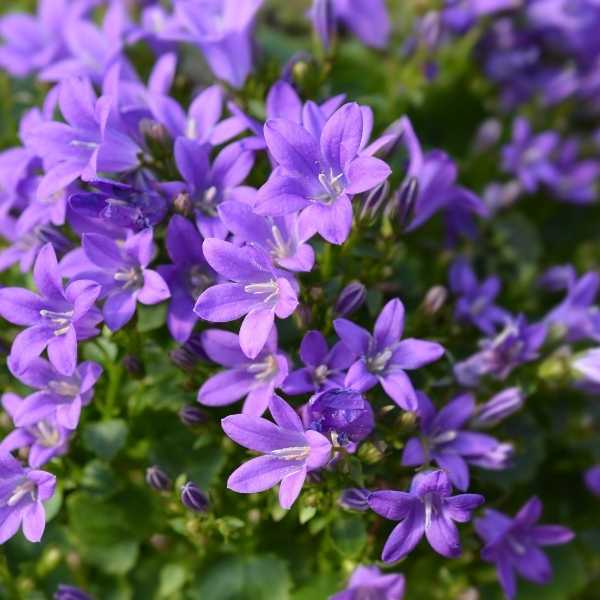
:max_bytes(150000):strip_icc()/echinacea--with-purple-flowers-1215533902-e993fb953d5a44bf83cfef2382da5688.jpg)
It thrives in either dry or moist soil and can tolerate drought once established. Numerous cultivars have been developed for flower quality and plant form. The flowers can also go into the composition of fresh bouquets. The fruit is an achene, sought after by birds.Įchinacea purpurea is grown as an ornamental plant in temperate regions.
#Purple coneflower toxic to dogs full
The plant prefers well-drained soils in full sun. The involucral bracts are linear to lanceolate. The tubular florets are hermaphrodite while the ligular florets are sterile. These are surrounded by a ring of pink or purple ligulate florets. The inflorescence is a capitulum, 7 to 15 cm in diameter, formed by a prominent domed central protuberance consisting of multiple small yellow florets. The alternate leaves, borne by a petiole from 0 to 17 cm, are oval to lanceolate, 5-30 x 5-12 cm the margin is tightened to toothed. It is pollinated by butterflies and bees. Its individual flowers (florets) within the flower head are hermaphroditic, having both male and female organs in each flower. Its cone-shaped flowering heads are usually, but not always, purple in the wild. Depending on the climate, it blooms throughout summer into autumn. Other names include: Broad-leaved purple coneflower, Eastern Purple Coneflower, Hedgehog Coneflower, Echinacea.Įchinacea purpurea is an herbaceous perennial up to 120 cm (47 in) tall by 25 cm (10 in) wide at maturity. The authors proposed to retain the names not to cause confusion among gardeners and herbalists.

discovered a misapplication of the name Echinacea purpurea (L.) Moench for the taxon correctly named Echinacea serotina (Nutt.) DC. Just two decades later, De Candolle raised him to the rank of species of the other genus Echinacea serotina (Nutt.) DC. In 1818, Thomas Nuttall describes a new variety that he named Rudbeckia purpurea var. Originally named Rudbeckia purpurea by Linnaeus in 1753 in Species plantarum 6, it was reclassified in 1794 by Conrad Moench, in a new genus named Echinacea purpurea (L.) Moench. The epithet purpurea means 'reddish-purple'. Its habitats include dry open woods, prairies and barrens.Įchinacea is derived from Greek, meaning 'spiny one', in reference to the spiny sea urchins 'εχίνοι' which the ripe flower heads of species of this genus resemble. It is most common in the Ozarks and in the Mississippi/ Ohio Valley. It is native to parts of eastern North America and present to some extent in the wild in much of the eastern, southeastern and midwestern United States as well as in the Canadian Province of Ontario. Revised from being potentially fatal to liable to cause gastric upset.įollowing the principle that anything which is harmful to us is also going to be bad news for your pet is a good guide - but you should also bear in mind that notĪll plants which are safe for us to consume, such as onions and grapes, are necessarily safe for your pet.Echinacea purpurea, the eastern purple coneflower, purple coneflower, hedgehog coneflower, or echinacea, is a North American species of flowering plant in the family Asteraceae. Most of the information available is anecdotal, so keep an eye out for new details: the toxicity of poinsettia, for example, has recently been You'll find plenty of information on the internet about which plants are poisonous and which are safe for your dog: the ASPCA have a useful website HERE which has pictures of many
#Purple coneflower toxic to dogs skin
Not all plants don't need to be eaten to be harmful: some can cause problems if your pet merely comes into contact with them - Tradescantia is apparently aĬommon source of skin irritation amongst pets. Others which are less toxic you may judge it an acceptable risk to have around - ultimately the decision is yours, based on your knowledge of your Oleander), Pieris (Pieris japonica), Sweet Pea (Lathyrus latifolius) and Lily of the Valley (Convallaria majallis). Who is likely to nibble or chew on plants, then obviously it is commonsense that you should avoid planting anything toxic - and personally I feel that as behaviour can change and can'tĪlways be predicted, it is wise to avoid those which can be fatal in relatively small doses, such as Yew (Taxus sp), Oleander (Nerium Within the limited confines of a garden your dog may be more inclined to experiment, and even an unpleasant taste isn't enough to deter some from a bit of unwise sampling. If you have a dog Well, lots of people do, and their pets come to absolutely no harm: but whether you personally decide to do so as well is a matter of sensible risk assessment. Should you have poisonous plants in your garden if you own a dog?


 0 kommentar(er)
0 kommentar(er)
